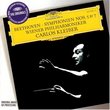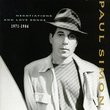| All Artists: Gustav Mahler, Wiener Philharmoniker, Bruno Walter Title: Mahler: Symphony No. 9 Members Wishing: 0 Total Copies: 0 Label: EMI Classics Release Date: 1/25/2005 Genre: Classical Styles: Historical Periods, Modern, 20th, & 21st Century, Symphonies Number of Discs: 1 SwapaCD Credits: 1 UPC: 724356296527 |
Search - Gustav Mahler, Wiener Philharmoniker, Bruno Walter :: Mahler: Symphony No. 9
 | Gustav Mahler, Wiener Philharmoniker, Bruno Walter Mahler: Symphony No. 9 Genre: Classical
Death-obsessed and superstitious, Mahler tried to outwit Fate by composing an unnumbered "song symphony" after the Eighth, but when he wrote the Ninth in 1907, he had been crushed by several devastating blows and knew he w... more » |
Larger Image |
CD DetailsSynopsis
Amazon.com Death-obsessed and superstitious, Mahler tried to outwit Fate by composing an unnumbered "song symphony" after the Eighth, but when he wrote the Ninth in 1907, he had been crushed by several devastating blows and knew he was fatally ill. It remained his last completed symphony, and was not premiered during his lifetime. The symphony is a heart-breaking mixture of holding on and letting go, of joy and beauty remembered and distorted by the anguish of loss, of doomed hope, protest, defiance, and resignation. Its extreme changes of mood and emotion are indicated by Mahler's instructions, such as: "with inmost feeling," "very tender and expressive," "like a heavy funeral march," "with fury," "with utmost force," "without expression." The third movement, called "Burleske," is marked "very stubborn"; the second, a three-part dance called "A comfortable Ländler," is subtitled "somewhat clumsy and very uncouth." Changes of tempo and dynamics are often sudden and violent; climaxes build up, collapse, rise again, scale the heights. The orchestral colors are exploited to their maximum. The last movement is a leave-taking reminiscent of the "Farewell" from the "Song of the Earth," and, like it, dies away into nothingness. Recorded live in Vienna in January 1938, the playing is deeply committed if not entirely perfect, and if all the lines of Mahler's complex, multi-thematic counterpoint are not always clear, one must remember that if he had heard or conducted the work, he might, as always, have made emendations. The performance is historically significant: two months later, Hitler invaded Austria and Walter, Mahler's foremost champion, as well as concertmaster Arnold Rosé, who plays the violin solos, and many other orchestra members, had to flee for their lives. --Edith Eisler Similarly Requested CDs
|
CD ReviewsA Profound as well as Historical performance Howard F. Stein | Oklahoma CIty, OK USA | 05/26/2010 (5 out of 5 stars) "Bruno Walter's later (late 1950's, or early 1960's, I think) recording of Mahler's Ninth Symphony is well known. It is a profound understanding of late Mahler. I have lived with it, first in vinyl LP, and have often returned to it, since I was aa teenager. Its musical "edges" are rounded, so to speak. Its musical view is from Olympus.
The January 1938 recording with the Vienna Philharmonic is not only of "historic" value, because of the ominous circumstances in which it was performed and recorded. The performance itself is also a revelation -- or at least is to me. The recorded sound is remarkable for its time. It also does not matter (to my ears), because the performance pierces the listener despite its age. It is a far more angular, urgent, even fierce reading of Mahler than Walter's later studio recording. It is emotionally raw. I purchased the CD with the 1938 performance in May 2010, and it is one to which I know I will often return -- together with interpretations by Klemperer and Horenstein. If I had to choose between the two Wwalter recordings I would refuse to choose! Both are essential to an understanding of the inner world of Mahler and the world he evoked." |

 Track Listings (4) - Disc #1
Track Listings (4) - Disc #1








